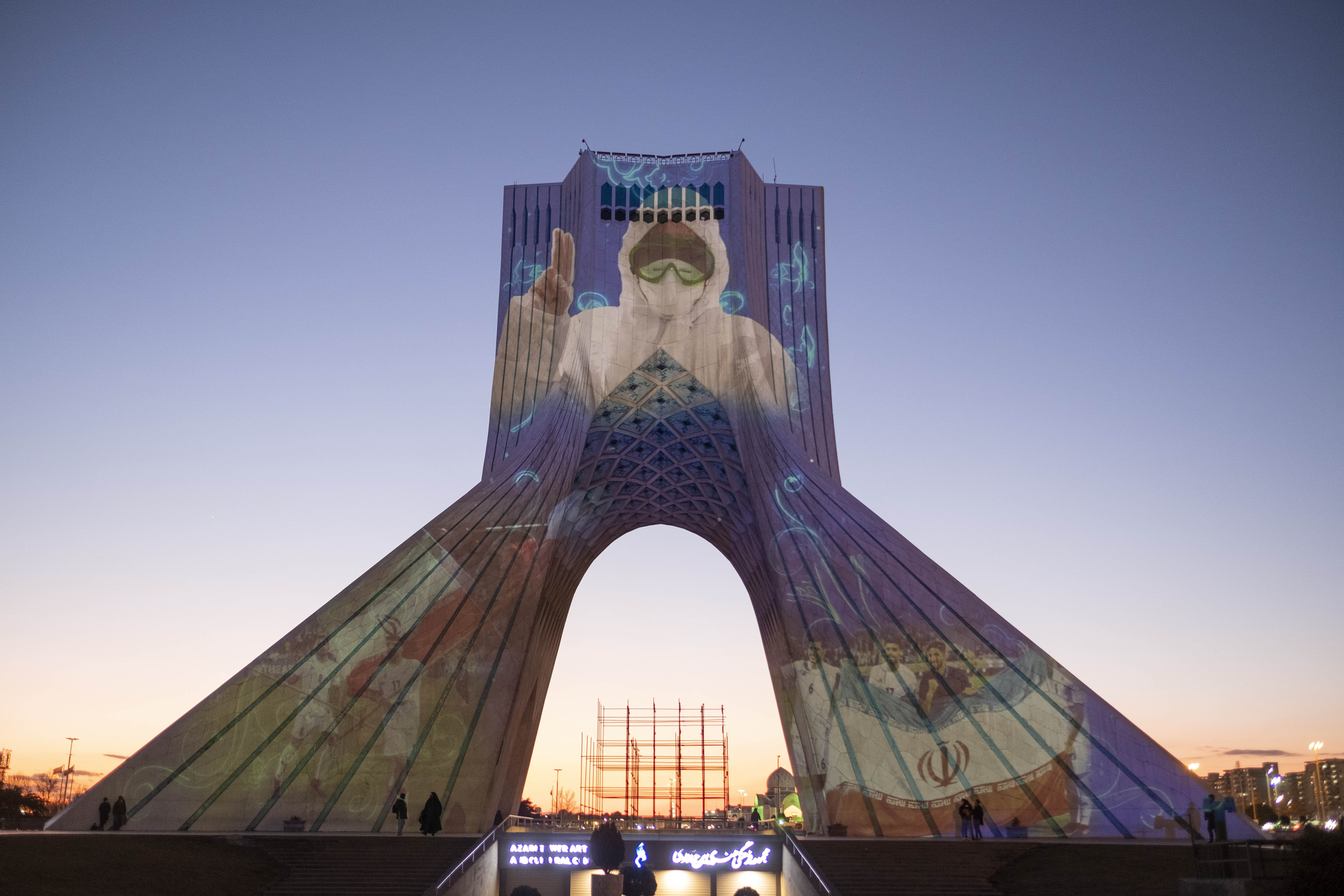"Strikers feel they have nothing left to lose"

For weeks, nurses have been gathering in their hundreds across Iran. Videos and pictures from several cities have been widely circulating on social media. With slogans like “Where is our money? In your pockets!” and “As nurses, we are the symbol of patience, but our patience is exhausted”, nurses are demanding not only better salaries but also adherence to existing overtime regulations and labour protection laws.
On 31 August, Iran's President Masoud Pezeshkian declared he was working on a solution. The new Iranian health minister, Mohammad-Reza Zafarghandi, had announced a few days earlier that the state-employed nurses were owed a total of 7.5 trillion tomans (around $170 million). Pezeshkian said he authorised the withdrawal of funds from the National Development Fund to pay outstanding salaries.
However, it is unclear how much of this money will actually reach the nurses. The newly formed Coordinating Council of Nurses declared on 7 September via its Telegram channel that the government had repeatedly ignored the nurses clearly articulated demands, and that authorities had only responded to the strikes with minor and delayed backpay, which was also heavily taxed and only minimal in some regions.
Heavy workload brings nurses to their knees
Strikes began on 3 August in a hospital in Shiraz and quickly spread to other cities. Over 50 hospitals in more than 20 cities are now taking part in the work stoppages. In the capital Tehran, nurses gathered in front of the Ministry of Health on 21 August, putting themselves at great risk. Assemblies are considered the most dangerous form of protest in Iran, as they are usually suppressed immediately.
Nurses are not only demanding fair pay but are also protesting their enormous workload. Overtime work is compulsory, wages are ridiculously low and the working atmosphere is often hostile. Threats and insults are the daily norm. In recent years, there have been repeated reports of attacks by patients and their carers. Nurses are calling for a strategy to protect against such attacks.
A stark indication of the growing despair among nurses is a series of suicides. Several nurses have taken their own lives since April this year, worn down by constant overtime, financial hardship and lack of support, as the chairman of the nursing union underlined in an interview.
Farshad Esmaili, a labour lawyer in Tehran, told Qantara: “The working conditions of nurses are characterised by low wages and a lack of job security. In the past, all nurses were permanent employees of the state with stable employment contracts, but today, following the broad privatisation of the healthcare system, many no longer have that security.”
The consequences of privatisation
To understand the roots of the crisis, it's necessary to go back to the 1990s when the ruling government introduced a plan for the “self-administration of state hospitals”. The aim was to make state healthcare facilities more financially independent of the government. It laid the foundations for the commercialisation of healthcare in Iran. Hospitals were gradually forced to reduce their expenditure while increasing their income.
One of the main strategies they resorted to was to outsource work in hospitals to private temporary employment agencies. Today, 40% of nurses are employed by these companies, restricting employee rights. One of the current central points of contention is the so-called 89-day contract rule. This allows employers to hire nurses on a short-term basis without granting them the rights and benefits of a regular employment relationship. Many protective labour laws no longer apply, Esmaili calls it an "exploitative practice", and the result is massive insecurity among nurses.
“Most of us have fixed-term contracts. We are valued less than the doctors, but without us, the entire system would collapse,” says a nurse from Tehran, who wishes to remain anonymous, in an interview through Telegram. “The burdens placed on us are unbearable,” she adds. In one month, she had to work 140 hours of overtime and received just a fraction of what she was legally entitled to.
The President of the Iranian Medical Association, Mohammad Raiszadeh, has also been critical of the situation. In an interview on 7 September, he emphasised that the income levels of permanent nursing staff and those hired through temporary employment agencies should be equalised.
Many choose to emigrate
According to the Ministry of Health, around 230,000 people work as nurses in Iran. The state-run Iranian Nursing Organisation (INO) reports that there are only 1.5 nurses per 1000 inhabitants, which is half the global average. The current situation is exacerbating the already severe staff shortage in hospitals, where official figures show an additional 100,000 nurses are currently needed.
Around 3000 nurses leave the country every year, and according to the INO, Germany and Denmark are the most popular destinations. The vast majority go to Europe or the Gulf states in search of better working conditions and more secure living standards. “It’s so bad that many of my colleagues don’t even have a home anymore. They sleep in the hospital because they can’t afford to rent,” reported Mohammad Sharifi Moghaddam, chairman of the state-controlled nursing union, in an interview with the newspaper Shargh on 14 August. Labour lawyer Esmaili explains that the crisis is driven by a loss of prospects: “Strikers feel they have nothing left to lose.”
The nursing profession in Iran is highly gendered. Over 75% of nurses are women, and many are at the forefront of the current strikes. But labour lawyer Esmaili avoids classifying the protests as feminist. “The ‘woman, life, freedom’ movement has certainly left its mark,” he says, “but these strikes do not explicitly call themselves feminist, even though their demands are undoubtedly feminist at their core.”
Pardis Gharehbeglou, a medical anthropologist who worked in Iranian hospitals during the coronavirus pandemic, emphasises: “Nursing in Iran is not only an underpaid profession but a deeply gendered one, as it is all over the world. In this situation, systemic discrimination against women is not primarily evident between men and women in the same profession, but becomes clear when you consider that the nursing profession is predominantly chosen by women.”
The political dimension
As the pressure from the strike increases, so does state repression. Many nurses have been arrested in various cities in recent weeks. The nursing union confirms that there have been widespread threats by authorities to banish strikers to remote provinces or to impose sanctions such as salary cuts.
Although nurses are primarily focused on improving their working conditions, the political dimensions of the strike are impossible to ignore. Many of the current labour disputes in Iran are driven by economic and social problems caused by state failure and widespread corruption.
The current nursing strikes are not the first by medical workers. In 2022, nurses and doctors who rushed to the aid of injured demonstrators during the “woman, life, freedom” protests were often attacked by regime forces themselves. During protests against the tripling of fuel prices in 2019, there were also reports of strikes by nurses in hospitals as a show of solidarity.
The current protests lack clear leadership or structure, even though there are early signs that nurses are becoming more organised, for example, on social media or through initiatives such as the aforementioned Coordinating Council of Nurses. Pardis Gharehbeglou remains hopeful about the current movement: “The nurses have shown that they are not prepared to give up. Their protests are growing and they have developed an awareness of their power as a result of the ‘woman, life, freedom’ movement.”
© Qantara.de 2024
